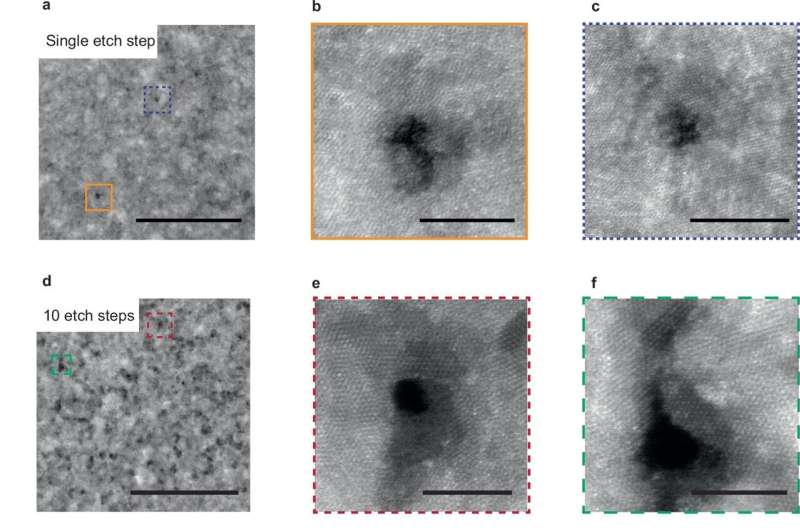Researchers at the University of Chicago have developed a novel method for generating multiple, tunable nanopores in 2D materials like molybdenum disulfide. This breakthrough could revolutionize water decontamination, resource recovery, and energy generation. The team’s approach allows for precise control over the location, concentration, and size of the pores, overcoming the limitations of the traditional “one pore at a time” method. This innovation has the potential to scale up 2D material membranes for real-world applications, including water purification and renewable energy.

Precision Pore Creation
Traditional ways of manufacturing nanoporous membranes are quite cumbersome as they involve a single process of boring dozens or hundreds of nanometer-level pores. This ‘one pore at a time’ basis has highly limited the scalability of such materials for real-world applications.
But the researchers at University of Chicago came up with a revolutionary fix. A few layers of polycrystalline molybdenum disulfide overlap and they can control where the grain boundaries — the weak spots that will become holes in due course. The patterned precursors technique is an example of pre-patterning, from which they can not only predict the locations of pores but also adjust their concentration and even their size in the scale ranging from 4 nanometers to below 1 nanometer.
Rationale for Nanoporous Membrane-Based Separations
Nanoporous membranes comprising atomic-scale entrances have been acknowledged as promising for applications such as water purification, selective ion extraction, or osmotic energy harvesting. Traditional pore-creation methods have been restrictive and made it extremely difficult to scale these materials up in the lab.
The University of Chicago team has come up with a new way to tackle that obstacle. They have cleared the way toward unlocking these materials’ full potential by allowing for the concurrent and precise creation of many individual nanopores simultaneously This advance can potentially be used for creating efficient water treatment systems, better fuel cells, or even entirely new ways of generating renewable energy in the form of osmotic power generators.
Collaboration across Disciplines: The Gateway to Innovation
This new pore-creation method, developed over a year of interdisciplinary work across three research groups in the Pritzker School of Molecular Engineering (PME) at UChicago, is an important proof-of-concept.
It is through the work of this team across academic silos that we see the extraordinary potential for interdisciplinary collaboration to foster scientific breakthrough. To achieve this, the researchers drew on expertise in batteries-related research and quantum physics, developing methodologies that allow for precision synthesis based control of material composition, structure and defects to tune pore properties at will.
This shared innovation not only yielded the pore-making technique for FRIR but may also underpin an entire generation of advanced materials and functionalities. Reiterating this point, the researchers write: “The target is not one specific material or property; rather our aim is to develop strategies for having spatial control over many of these phenomena in combination which will stimulate innovation.
